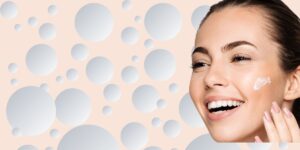Introduction
Because the human body does not produce Vitamin C, this essential vitamin must be introduced to the body. As a result of the difficulties in getting dietary Vitamin C to the outer skin layers, increasing diet Vitamin C is not a viable route for increasing skin Vitamin C levels. Therefore topical application is the most viable option for increasing skin Vitamin C levels. However, many skincare treatments have failed to produce an increase in skin Vitamin C levels and thus proven ineffective in delivering skincare benefits1. Why?
There are very serious challenges associated with topically delivering stable L-Ascorbic Acid past the outer stratum corneum skin barrier2. These challenges can be summarised as follows:
a. L-Ascorbic Acid Stability
“In spite of all those approaches, in general ascorbic acid stability remains a challenge, and some of these approaches (e.g., very low pH) can lead to unwanted aesthetic skin effects”. 2
Because L-Ascorbic Acid form of Vitamin C is highly unstable under normal conditions, it quickly degrades in the presence of water, air, heat, pH, light and metals3. This represents the biggest challenge to formulators is preparing effective Vitamin C cosmetic preparations2,4. For example, a 20% water based solution of L-Ascorbic Acid will be 50% degraded within 2 weeks and 90% degraded within 4 weeks under normal storage conditions. Therefore, shelf life of water-based L-Ascorbic Acid serums and creams is very short.
b. Skin Penetration
“For skin absorption of L-Ascorbic Acid to occur, formulation pH must be less than 3.5” 5.
As L-Ascorbic Acid is a water-soluble, acidic molecule, it cannot penetrate the stratum corneum under normal conditions. Less than 1% of the topical dose enters the skin2. Being an acid means that for it to penetrate the skin, the formula must have an acidic pH of less than 3.5 5. At higher pH levels, it will not penetrate the skin and will remain on the skin surface only to be washed away. A serum or cream with an acidic pH of less than 3.5 can be highly irritating to many people. A water-based Vitamin C serum that is not irritating, will be unable to penetrate the skin.
Discussion
Poor stability of L-Ascorbic Acid and it’s inability to penetrate the skin barrier pose significant challenges to skincare formulators in using this ingredient. Many Vitamin C creams and serums fall short of meeting these challenges and are ineffective in delivering stable L-Ascorbic Acid to the skin. Years of scientific research have failed to solve the stability and penetration problems of water-based L-Ascorbic Acid formulations. These formulations remain unstable and ineffective.
Read the ingredient label carefully. Avoid water-based L-Ascorbic Acid formulated Vitamin C products.
The Solution
Because our Vitamin C Serum and our C E Ferulic Serum use new generation derivatives and nano-formulation technology formulations, they overcome these challenges. Our nano-based formulations produce stable serums with stable derivatives that can penetrate the skin barrier to increase Vitamin C skin levels. Nano-encapsulation and penetration enhancement of active ingredients provides enhanced ingredient stability and superior skin penetration of the biological actives. Our proprietary Green Micelle™ nano-emulsion formulation system uses organic ingredients to form nano-encapsulating micelles that are stable and skin penetrating.
References
- 1.Burke K. Interaction of vitamins C and E as better cosmeceuticals. Dermatol Ther. 2007;20(5):314-321. doi:10.1111/j.1529-8019.2007.00145.x
- 2.Bissett D. Anti-aging Skin Care Formulations. In: Cosmetic Formulation of Skin Care Products. Vol 30. Cosmetic Science and Technology. Taylor & Francis; 2006:167-186.
- 3.Caritá A, Fonseca-Santos B, Shultz J, Michniak-Kohn B, Chorilli M, Leonardi G. Vitamin C: One compound, several uses. Advances for delivery, efficiency and stability. Nanomedicine. 2020;24:102117. doi:10.1016/j.nano.2019.102117
- 4.Ahmad I, Sheraz M, Ahmed S, et al. Photostability and interaction of ascorbic acid in cream formulations. AAPS PharmSciTech. 2011;12(3):917-923. doi:10.1208/s12249-011-9659-1
- 5.Pinnell S, Yang H, Omar M, et al. Topical L-ascorbic acid: percutaneous absorption studies. Dermatol Surg. 2001;27(2):137-142. doi:10.1046/j.1524-4725.2001.00264.x












